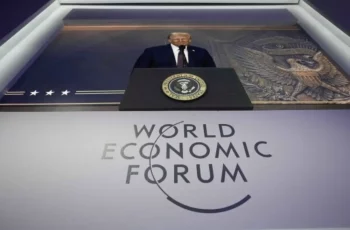
In mid-May 2025, thousands gathered in Helsinki’s Senate Square under a stark yet unsettling slogan: “Epäluottamus” – “Distrust.” Teachers, nurses, sociologists, programmers, musicians, drivers, students, the unemployed, and retirees—people from diverse professions, generations, and worldviews—took to the streets to protest the actions of Prime Minister Petteri Orpo’s government. Once promising social stability and economic growth, the administration now faces accusations of dismantling the very foundations of the Finnish state: its universal welfare model, a cornerstone of Finnish society.
What began as scattered union strikes has, over recent months, swelled into a broader wave of public discontent, encompassing not only trade unions but also civic movements, human rights advocates, academic communities, and cultural figures. In the spring of 2025, Finland witnessed its largest labor protests in two decades. The cause? Sweeping reforms, widely viewed as cynical, that cut social protections, tighten labor laws, and restrict the right to collective action.
The Orpo-Purra government defends its measures as necessary to stabilize the budget, arguing that Finland’s economy can no longer sustain current levels of social spending amid demographic shifts and global pressures. Critics, however, are unequivocal: behind the rhetoric of fiscal restraint lie ideological choices that are reshaping the essence of the Finnish state.
Robert Salin, Secretary General of the Finnish League for Human Rights, warns: “These cuts erode the foundations of the welfare state. They deepen inequalities and weaken the guarantee of basic rights.” His words are echoed by a growing number of expert reports and statements highlighting rising poverty levels and increasingly limited and unstable access to education, healthcare, and social security. Compounding these concerns is the government’s decision-making process: human rights advocates note that it systematically sidesteps public consultations, shortens deadlines for feedback on draft laws, and excludes NGOs from preparatory discussions.
Proposals to curb the right to strike and eliminate tax benefits for union members have sparked particular outrage. These measures are widely seen as a targeted assault on the labor movement—an institution that has long served as a balance between state power and society. Enni Saikonnen, a representative of the Social Democratic Party, openly accuses the government of eroding workers’ rights: “Attacking unions with such ferocity is a blow to the very idea of social justice.”
Tensions are further inflamed by a paradoxical allocation of resources. While social benefits are slashed, the government grants tax breaks to high-income groups and funnels funds to private healthcare companies, all while reducing investments in public medical facilities. This contradiction undercuts not only the government’s economic arguments but also its moral credibility.
Another pressing issue is the rise of xenophobic sentiment and the curtailment of immigrants’ rights. The Prime Minister’s silence on the rhetoric and initiatives of the Finns Party—his coalition partner—has sparked growing outrage. Robert Salin emphasizes: “Many of the government’s actions contradict its own commitments to combating racism.” As a result, Finland’s social stability and its reputation as a rule-of-law state and a democratic stronghold in Northern Europe are at risk.
Yet, mass protests are unlikely to prompt an immediate policy shift. Finnish political culture, rooted in consensus and institutional dialogue characteristic of Nordic countries, unlike the more polarized debates common in Anglo-Saxon democracies, is traditionally marked by inertia and pragmatism. One thing is clear, however: the protests of spring 2025 are not merely a response to individual laws. They reflect a deep, structural distrust. The government’s policies are seen by many as an attempt to dismantle the fragile but vital social contract between the state and its citizens—a contract that has secured Finland’s place among the world’s most just, prosperous, and cohesive nations for decades.
The Orpo cabinet will likely press on with its agenda—it has two years left. But demonstrations like “Epäluottamus” and the surge of civic activism have already reshaped the political landscape. When Finns return to the polls in 2027, the question will not only be about choosing a party but about the kind of state they wish to preserve—or rebuild.










Comments